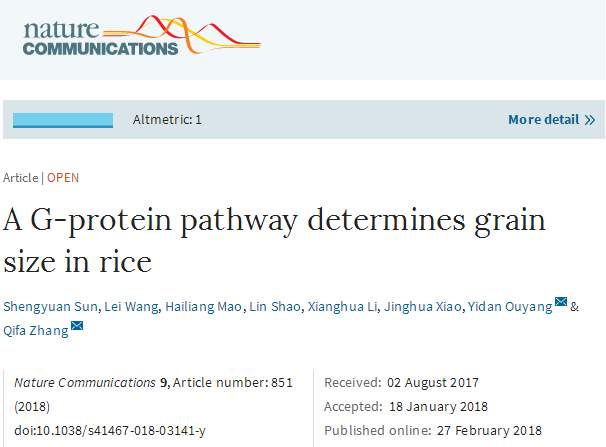
On Feb. 27, 2018, Nature Communications publishes an article entitles “A G-protein pathway determines grain size in rice”. The first author is Shengyuan Sun, a doctoral candidate, and correspondence for this work is Prof. Qifa Zhang and Prof. Yidan Ouyang.
Manipulating grain size is an effective strategy for increasing cereal yields. This work identifies a pathway composed of five subunits of the heterotrimeric G proteins that regulate grain length in rice. The Gβ protein is essential for plant survival and growth. Gα provides a foundation for grain size expansion. Three Gγ proteins, DEP1, GGC2 and GS3, antagonistically regulate grain size. DEP1 and GGC2, individually or in combination, increase grain length when in complex with Gβ. GS3, having no effect on grain size by itself, reduces grain length by competitively interacting with Gβ. By combining different G-protein variants, we can decrease grain length by up to 35% or increase it by up to 19%, which leads to over 40% decreasing to 28% increasing of grain weight. The wide existence of such a conserved system among angiosperms suggests a possible general predictable approach to manipulating grain/organ sizes.